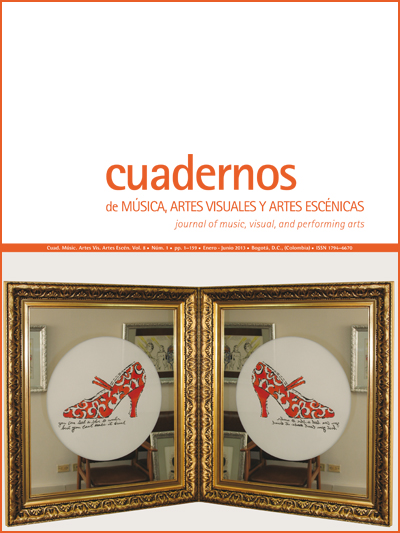Abstract
This article describes the second stage of the collection and classification process belonging to the research project El Método Kodály en Colombia.It describes its results and analyzes the influence that its implementation has had in adapting the Kodály Method to musical pedagogy in Colombia.
From the observation of documentary sources, audio– mostly from the Documentation Centre of the Ministry of Culture -video, printed music and
oral tradition, gathered through interviews and live recordings- 150 works were transcribed and classified. These include nursery rhymes, children’s songs, games and traditional folk songs from Colombia and other countries. This new collection will enrich the musical material from which children learn to sing, read, write and analyze music. Its implementation creates new challenges, new solutions, adaptations and concessions from the original
Hungarian method to its adaptation in Colombia and, perhaps, in Latin America.
This journal is registered under a Creative Commons Attribution 4.0 International Public License. Thus, this work may be reproduced, distributed, and publicly shared in digital format, as long as the names of the authors and Pontificia Universidad Javeriana are acknowledged. Others are allowed to quote, adapt, transform, auto-archive, republish, and create based on this material, for any purpose, provided the authorship is duly acknowledged, a link to the original work is provided, and it is specified if changes have been made. Pontificia Universidad Javeriana does not hold the rights of published works and the authors are solely responsible for the contents of their works; they keep the moral, intellectual, privacy, and publicity rights.
Approving the intervention of the work (review, copy-editing, translation, layout) and the following outreach, are granted through an use license and not through an assignment of rights. This means the journal and Pontificia Universidad Javeriana cannot be held responsible for any ethical malpractice by the authors. As a consequence of the protection granted by the use license, the journal is able to publish retractions or to correct information already published. Publishing contents in this journal does not generate royalties for contributors.


